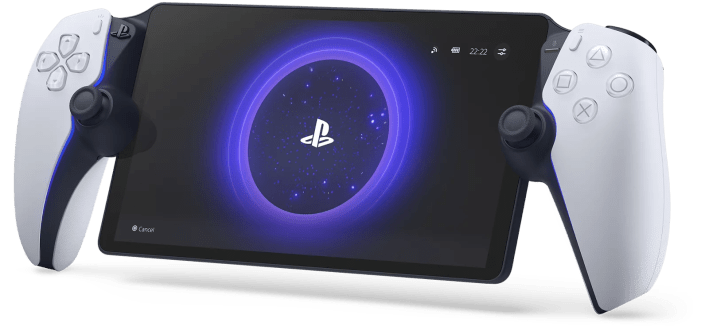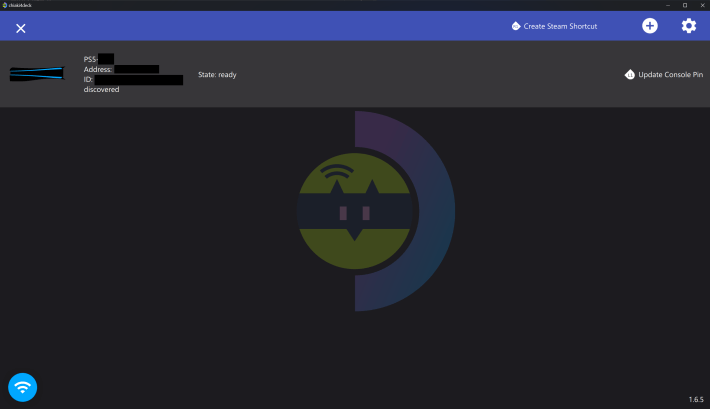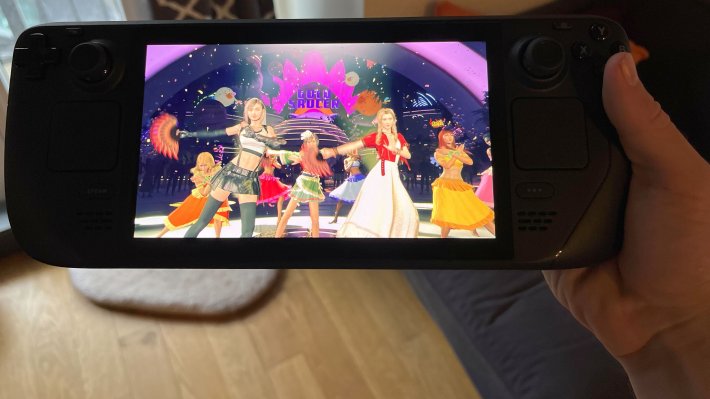When Sony announced the PlayStation Portal, a remote streaming device for PlayStation 5, I balked. $199.99 for what is basically a DualSense with an LCD fused to it is not a great value proposition, particularly when it doesn’t really play games on its own. That’s the price of a Switch Lite, and for 150 bucks more you can get an entry level Steam Deck. Plus, thanks to open source software, many of those devices can do what the Portal does, and so much more, including PC streaming. You probably have a device in your house now that can do this, something that obviates the need to buy a single, purpose-built device.

Recently, I’ve softened my stance. The Portal mostly just works, and in the grand ecosystem of Sony devices where a Dualsense Edge also costs $199.99, that makes a kind of corporate-brained sense. The people I know who have it also report back that it’s one of the best PlayStation controllers they’ve ever used. The downside is that it does not have the best screen out there, it’s WiFi 5 only and it doesn’t have Bluetooth audio – you’re either using wired headphones or something from Sony’s proprietary ecosystem. The other stuff is fine, but no bluetooth audio feels particularly egregious even by Sony standards. Like the DualSense Edge, it’s simply not a device I would ever choose when I can go the DIY route. And in this case that mainly involves two pieces of Software: chiaki4deck and Moonlight (along with the optional stream hosting app Sunshine).
Remote play and non-PlayStation equivalents of in-home streaming are not new features by any stretch. Variants have existed on PlayStation since the PS3, although it was not used very reliably then. On the PC end, features like Nvidia Gamestream and Steam Link have been widely used for a while now, although both have fallen out of favor for Moonlight, which we will get into in a little bit. The official Remote Play app works OK, although I did not enjoy the experience of using it from a latency perspective.

chiaki4deck is a Steam Deck-optimized fork of Chiaki, an open source equivalent of Remote Play optimized for Steam Deck. Despite the name, chiaki4deck has been ported over to several other platforms, and it has so many quality of life improvements that it’s overwhelmingly the preferred client for most use cases. As of this writing it works on Windows, macOS, Linux, FreeBSD, OpenBSD, Android, and even Switch, although that gets into Switch homebrew territory, which is well outside the scope of this post.
Being open source software, there is some unavoidable friction to Chiaki. Unlike Remote Play, which is a straightforward sign-in process, installing chiaki4deck involves getting your encoded PlayStation AccountID. Thankfully this process has gotten far easier recently, and there’s multiple ways to get that (installing on Linux or Mac is a breeze) including a public tool that allows you to find your account info provided your name is searchable on PSN. You may need to do a little troubleshooting, but ultimately the process has been streamlined so much with chiaki4deck over the vanilla client, that once you have it set up it’s smooth sailing.

I don’t have a Steam Deck, but my coworker Nathan does, and he was able to get chiaki4deck up and running pretty easily once he found the ID tool. My experience was similar when I installed chiaki4deck on both my PC and MacBook Air from the latest release. Once I got it up and running, I was shocked at how smooth the experience was even over wifi. I have yet to run an ethernet cable to my living room PC, but Dragon’s Dogma 2 was playable enough over wifi, although I would not risk playing something competitive on it. My DualSense just worked, haptics, adaptive triggers and everything, and according to Nathan haptics worked just fine on his Steam Deck as well. What’s more, Chiaki4Deck lets you get granular with how you are streaming, giving you total control over bitrate, resolution, video decoding, mic input and much more.

Aside from not having features like being able to use bluetooth, Chiaki has an additional benefit over the Portal: HDR. As of a fairly recent update, HDR streaming has been added to chiaki4deck, which objectively makes the Steam Deck OLED a better dollar-for-dollar buy if it wasn’t already. Once it works, it really works.
Gamestream, Sunshine, and Moonlight

All of this is good if you have a PS5, but it pales in comparison to what’s available with PC streaming. Years ago, Nvidia had a nice feature called GameStream that let you stream from any device with a compatible GPU or something like an Nvidia Shield. As of February of last year, they stopped supporting the feature and replaced it with GeForce Now on their Shield devices. That’s fine, because Moonlight and Sunshine are far better options that work with a tremendously wide array of devices and perform better than even Valve’s option Steam Link.

Moonlight takes GameStream to its logical conclusion. Instead of existing as a useful feature thought of and then promptly forgotten by a gargantuan GPU company, it exists free, flexible and in the open: the result of countless open ports. Got a computer? There’s a Moonlight client. Got an iPhone or Android or Apple TV? There’s a Moonlight client for those too. Hell it even runs on PS Vita, the Wii U, a Raspberry Pi, and the OS that comes packaged with LG OLEDs. With a little bit of setup you can even host your own remote gaming server, allowing you to play PC games via cloud gaming on any compatible device remotely. And while the Moonlight takes Nvidia’s abandoned GameStream and runs with it, Sunshine attempts to build something new to work with it: allowing for complex self-hosted options with more flexible options for video encoding. Why bother paying for an additional service, when you have all the tools for cloud gaming at home?
A dream realized
Like many people during lockdown in 2020, I took on a lot of projects. Some of those projects were more fruitful than others (I still get flashbacks when I think about my Hackintosh phase). But one of my dreams for several months was the idea of a totally liberated in-home game streaming experience; a system that would allow me to have access to all my games on any system, and import them directly into OBS for streaming. The result was a convoluted patchwork system predicated on capture boxes and the NDI protocol, which sort of worked but didn’t really add up to anything practical. Moonlight and chiaki4deck are the realization of that dream. I am no longer tethered to just my TV or my PC, but can game seamlessly between the two at a moment’s notice. And what’s more, it’s software that I know is in good hands, software that is constantly iterating, expanding, and becoming more usable by the day.
We don’t just have PlayStation Portal at home. We have something that’s better and better every day.


